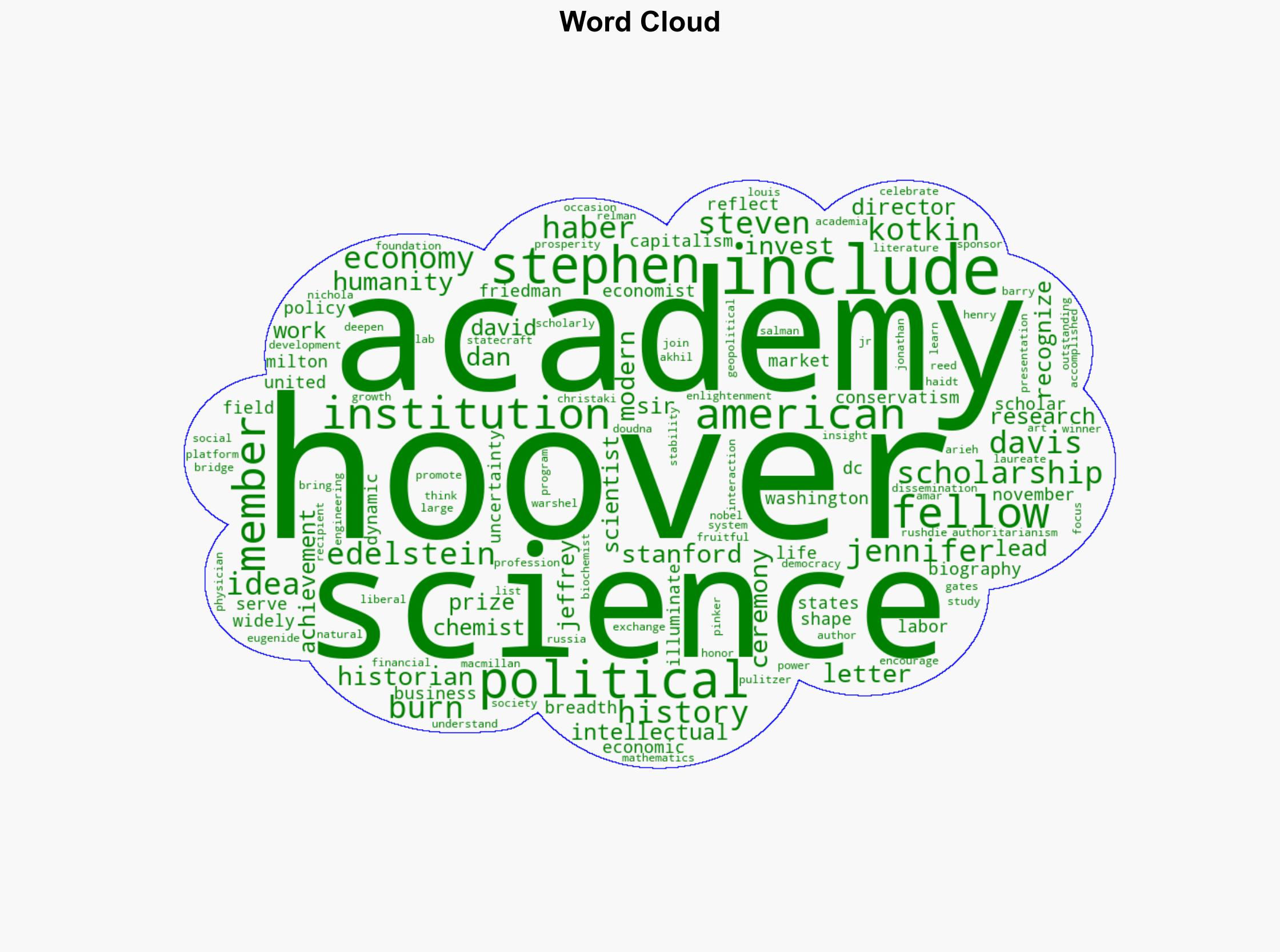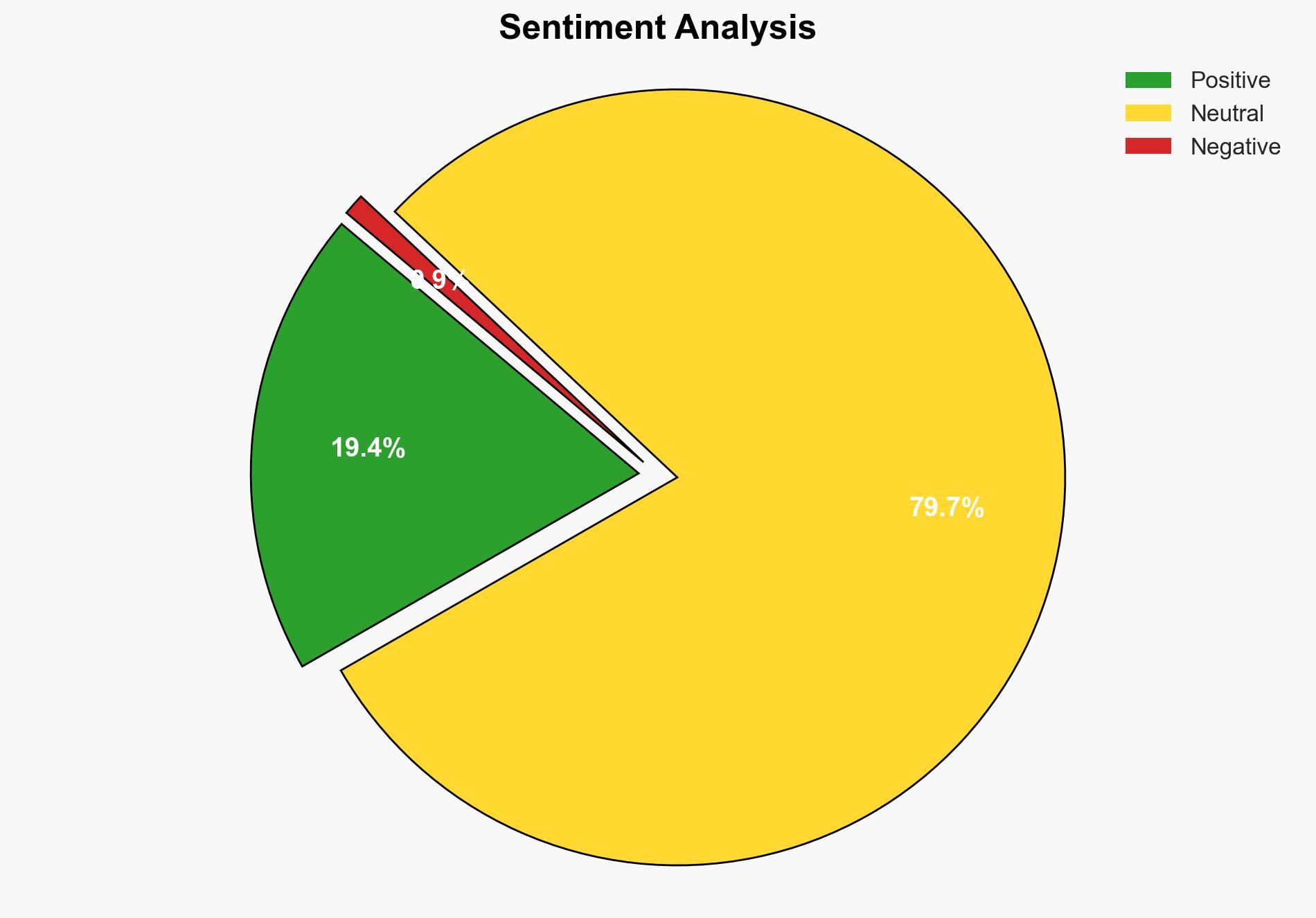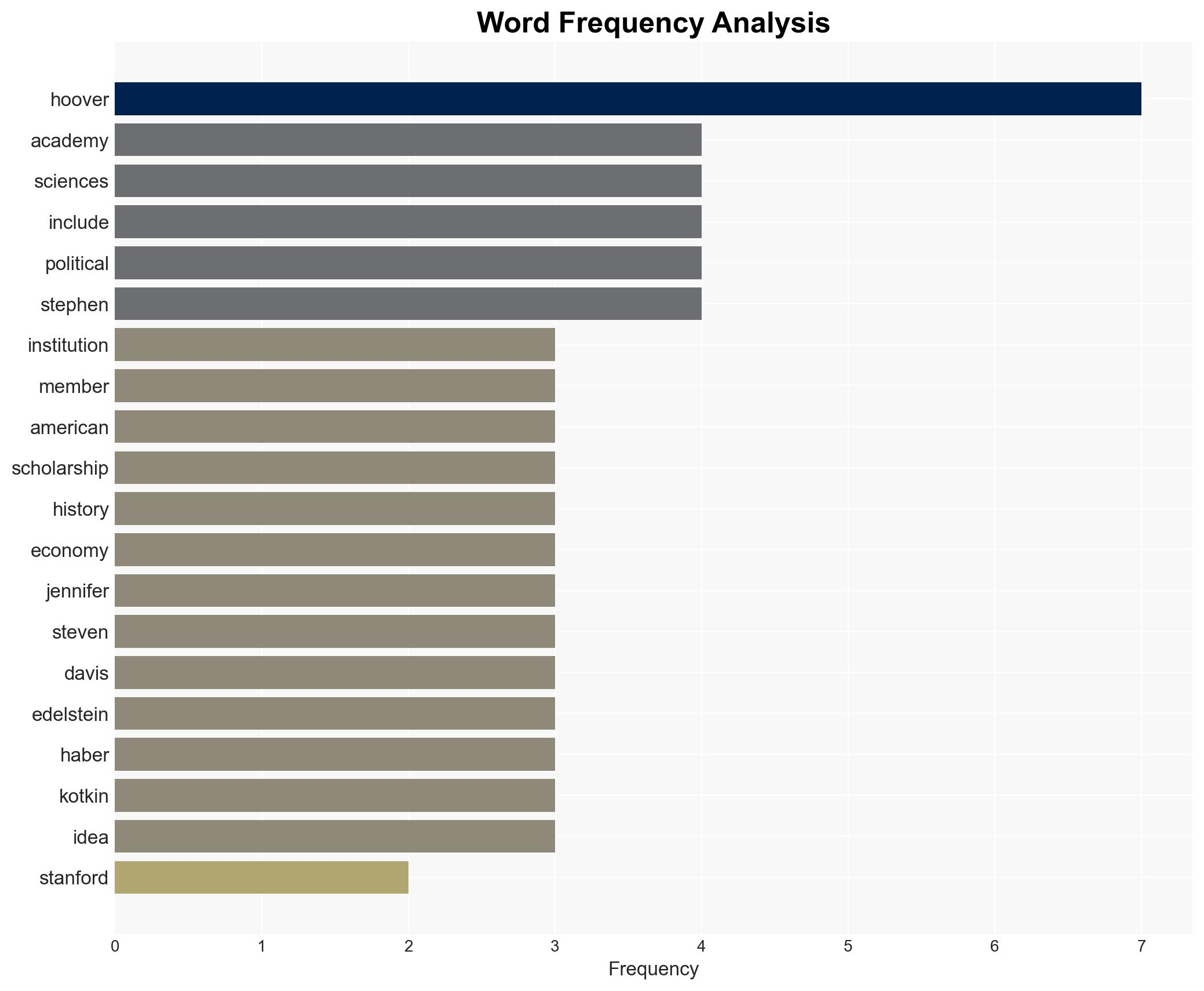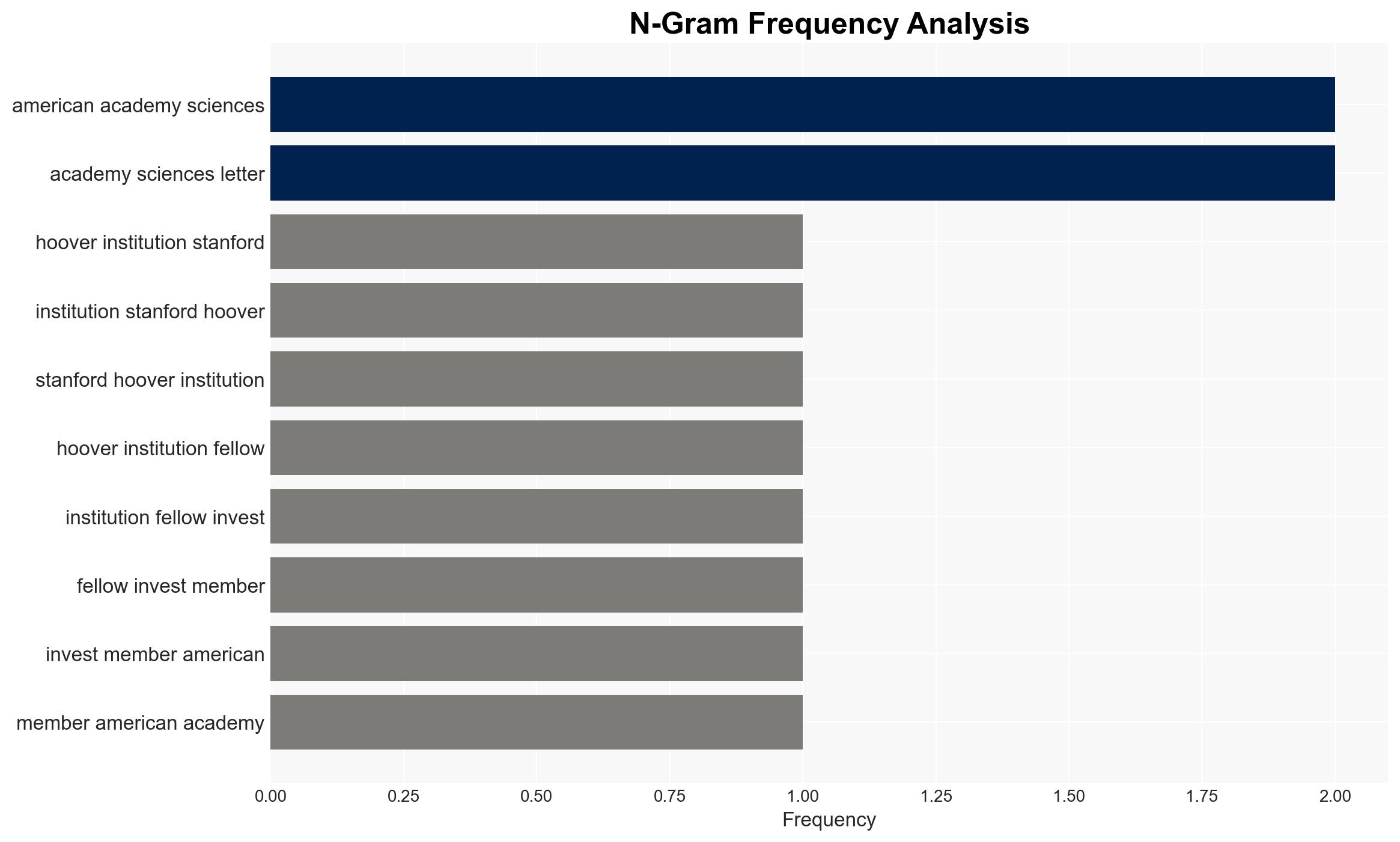Five Hoover Institution Fellows Invested Into American Academy Of Sciences And Letters – Hoover.org
Published on: 2025-11-13
AI-powered OSINT brief from verified open sources. Automated NLP signal extraction with human verification. See our Methodology and Why WorldWideWatchers.
Intelligence Report: Five Hoover Institution Fellows Invested Into American Academy Of Sciences And Letters – Hoover.org
1. BLUF (Bottom Line Up Front)
The investment of five Hoover Institution fellows into the American Academy of Sciences and Letters signifies a strategic enhancement of the institution’s influence in academic and policy-making circles. With a moderate confidence level, the most supported hypothesis is that this event will strengthen the Hoover Institution’s role in shaping intellectual discourse and policy recommendations in the United States. Recommended actions include monitoring the fellows’ contributions to the Academy and leveraging their positions to promote Hoover’s strategic objectives.
2. Competing Hypotheses
Hypothesis 1: The investment of Hoover Institution fellows into the Academy will significantly enhance the institution’s influence in academic and policy-making circles, thereby increasing its ability to shape national discourse.
Hypothesis 2: The investment is primarily symbolic and will have limited practical impact on the Hoover Institution’s influence or its ability to affect policy and academic discourse.
Hypothesis 1 is more likely due to the high-profile nature of the Academy and the strategic positioning of the fellows in fields relevant to current national and global challenges.
3. Key Assumptions and Red Flags
Assumptions: The Academy’s recognition translates into increased influence and opportunity for policy impact. The fellows will actively engage in Academy activities to promote Hoover’s objectives.
Red Flags: Potential overestimation of the Academy’s influence on policy-making. The possibility that the fellows’ individual agendas may not align with Hoover’s strategic goals.
4. Implications and Strategic Risks
The investment could lead to increased visibility and credibility for the Hoover Institution, potentially attracting more funding and partnerships. However, there is a risk of reputational damage if the fellows’ contributions are perceived as politically biased or if they fail to engage effectively with the Academy’s broader mission. Additionally, there may be internal or external pushback against perceived elitism or exclusivity.
5. Recommendations and Outlook
- Encourage the fellows to actively participate in Academy events and initiatives to maximize influence.
- Monitor the alignment of the fellows’ activities with Hoover’s strategic goals and adjust support as necessary.
- Best-case scenario: The fellows’ involvement leads to significant policy influence and increased institutional prestige.
- Worst-case scenario: The investment is perceived as elitist, leading to reputational damage and internal discord.
- Most-likely scenario: Moderate increase in influence and visibility, with some tangible policy impacts over time.
6. Key Individuals and Entities
Jennifer Burns, Steven Davis, Dan Edelstein, Stephen Haber, Stephen Kotkin
7. Thematic Tags
Regional Focus: United States
Structured Analytic Techniques Applied
- Causal Layered Analysis (CLA): Analyze events across surface happenings, systems, worldviews, and myths.
- Cross-Impact Simulation: Model ripple effects across neighboring states, conflicts, or economic dependencies.
- Scenario Generation: Explore divergent futures under varying assumptions to identify plausible paths.
Explore more:
Regional Focus Briefs ·
Daily Summary ·
Methodology





